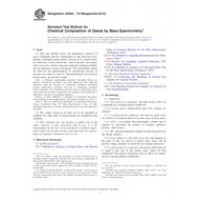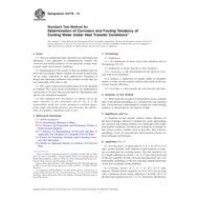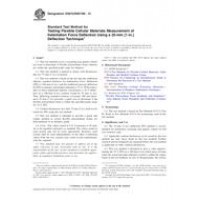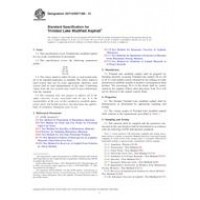ASTM E1733-95(2014)
- Standard Guide for Use of Lighting in Laboratory Testing
- standard by ASTM International, 10/01/2014
- Category: ASTM
$54.00
$27.00
1.1 The use of artificial lighting is often required to study the responses of living organisms to contaminants in a controlled manner. Even if the test organism does not require light, the investigator will generally need light to manipulate the samples, and the test might be conducted under the ambient light of the laboratory. One will need to consider not only whether the particular test organism requires light for growth, but also whether the environmental compartment relevant to the test is exposed to light and, if so, what the attributes of light are in that compartment. The light could affect growth of the organism or toxicity of a contaminant, or both. For instance, it has been shown that the toxicity of some organic pollutants is enhanced dramatically by the ultraviolet (UV) radiation present in sunlight (1, 2) .2 Furthermore, the level of ambient lighting in the laboratory (which might affect the test) is not standardized, nor is it comparable to natural environments. It is thus important to consider lighting in all forms of environmental testing. When light is used in the test, one should determine whether the spectral distribution of the radiation source mimics sunlight adequately to be considered environmentally relevant. Also, the container or vessel for the experiment must be transparent, at the point of light entry, to all of the spectral regions in the light source needed for the test.
 PDF
PDF
All of our standards document are available in PDF (Portable Document Format), an electronic, downloadable format.You will be able to download the file in your account downloads.
 Multi-User Access
Multi-User Access
After purchasing, you have the ability to assign each license to a specific user.
 Printable
Printable
At any time, you are permitted to make printed copies for your and your members' reference use.
ASTM D2650-10(2015)
Standard Test Method for Chemical Composition of Gases by Mass Spectrometry..
$24.00 $48.00
ASTM D4778-15
Standard Test Method for Determination of Corrosion and Fouling Tendency of Cooling Water Under Heat..
$24.00 $48.00
ASTM D5672/D5672M-15
Standard Test Method for Testing Flexible Cellular Materials Measurement of Indentation Force Deflec..
$21.00 $42.00





